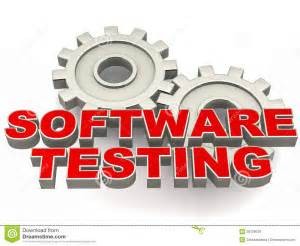The IEEE Std. 829-1998 defines a test log as a chronological record of relevant details about the execution of test cases. It’s a detailed view of activity and events given in chronological manner.
32. What does entry and exit criteria mean in a project?
Entry and exit criteria are a must for the success of any project. If you do not know where to start and where to finish then your goals are not clear. By defining exit and entry criteria you define your boundaries.For instance, you can define entry criteria that the customer should provide the requirement document or acceptance plan. If this entry criteria is not met then you will not start the project. On the other end, you can also define exit criteria for your project. For instance, one of the common exit criteria in projects is that the customer has successfully executed the acceptance test plan.
33. What is the difference between verification and validation?
Verification is a review without actually executing the process while validation is checking the product with actual execution. For instance, code review and syntax check is verification while actually running the product and checking the results is validation.
34. A Type of functional Testing, which investigates the functions relating to detection of threats, such as virus from malicious outsiders?
a) Security Testing
Testing where in we subject the target of the test , to varying workloads to measure and evaluate the performance behaviours and ability of the target and of the test to continue to function properly under these different workloads?
b) Load Testing
Testing activity which is performed to expose defects in the interfaces and in the interaction between integrated components is?
35. Can you explain process areas in CMMI?
A process area is the area of improvement defined by CMMI. Every maturity level consists of process areas. A process area is a group of practices or activities performed collectively to achieve a specific objective. For instance, you can see from the following figure we have process areas such as project planning, configuration management, and requirement gathering.
36. What is random/monkey testing? When it is used?
Random testing often known as monkey testing. In such type of testing data is generated randomly often using a tool or automated mechanism. With this randomly generated input the system is tested and results are analysed accordingly. These testing are less reliable; hence it is normally used by the beginners and to see whether the system will hold up under adverse effects.
37. Which of the following are valid objectives for incident reports?
Provide developers and other parties with feedback about the problem to enable identification, isolation and correction as necessary.
Provide ideas for test process improvement.
Provide a vehicle for assessing tester competence.
Provide testers with a means of tracking the quality of the system under test.
Websites have software called a web server installed on the server. The user sends a request to the web server and receives a response. So, for instance, when you type www.google.com the web server senses it and sends you the home page as a response. This happens each time you click on a link, do a submit, etc. So if we want to do load testing you need to just multiply these requests and responses “N” times. This is what an automation tool does. It first captures the request and response and then just multiplies it by “N” times and sends it to the web server, which results in load simulation.
So once the tool captures the request and response, we just need to multiply the request and response with the virtual user. Virtual users are logical users which actually simulate the actual physical user by sending in the same request and response. If you want to do load testing with 10,000 users on an application it’s practically impossible. But by using the load testing tool you only need to create 1000 virtual users.
39. What is functional system testing?
Testing the end to end functionality of the system as a whole is defined as a functional system testing.
40. What kind of input do we need from the end user to begin proper testing?
The product has to be used by the user. He is the most important person as he has more interest than anyone else in the project.
From the user we need the following data:
The first thing we need is the acceptance test plan from the end user. The acceptance test defines the entire test which the product has to pass so that it can go into production.We also need the requirement document from the customer. In normal scenarios the customer never writes a formal document until he is really sure of his requirements. But at some point the customer should sign saying yes this is what he wants.
The customer should also define the risky sections of the project. For instance, in a normal accounting project if a voucher entry screen does not work that will stop the accounting functionality completely. But if reports are not derived the accounting department can use it for some time. The customer is the right person to say which section will affect him the most. With this feedback the testers can prepare a proper test plan for those areas and test it thoroughly.
The customer should also provide proper data for testing. Feeding proper data during testing is very important. In many scenarios testers key in wrong data and expect results which are of no interest to the customer.
